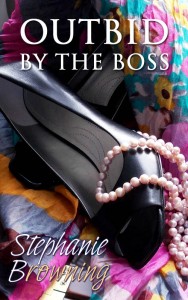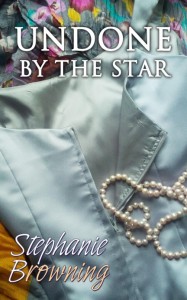Murder will out…
In her 1986 appearance at Trinity College in Toronto, P.D. James reasoned that our fascination with detective fiction stems from a longing to “return in spirit to a more ordered society, a more assured morality.” We want our murderers caught and their crimes punished, their motivation explained and the cases closed.
But for James Ellroy, author of such international bestsellers as L.A. Confidential, American Tabloid and The Black Dahlia, real life didn’t work out that way. His mother Jean, a 43-year-old nurse working for an aircraft manufacturer, was murdered in 1958 when James was just 10 years old, her body dumped on a roadway in suburban Los Angeles, her murderer never found.
My Dark Places is Ellroy’s acknowledgment of the past – his tortured adolescence, his struggle with drug and alcohol abuse, and  his complex feelings about the mother he had barely know and harshly judged. His journey back began in 1994 with a call from a friend. Frank Girardot was writing an article on five unsolved killings – including Ellroy’s mother’s murder. He would be reading her files and seeing her body exposed in photos from the crime scene. Ellroy couldn’t avoid it any longer.
his complex feelings about the mother he had barely know and harshly judged. His journey back began in 1994 with a call from a friend. Frank Girardot was writing an article on five unsolved killings – including Ellroy’s mother’s murder. He would be reading her files and seeing her body exposed in photos from the crime scene. Ellroy couldn’t avoid it any longer.
Six weeks later, he was on a plane to California. With the help of Bill Stoner, a retired Los Angeles County homicide detective, Ellroy sifted through the old police files and newspaper accounts of the case, and then systematically tracked down anyone he could who was even remotely connected with his mother’s murder. While the belated attempts to identify Jean’s killer were unsuccessful, Ellroy was able to finally establish a relationship with his mother, albeit a posthumous one.
Part autobiography, part investigative journalism, My Dark Places is a no-holds-barred and difficult read by a man who, by his own admission, is obsessed with murdered women and a debt to his mother that he can never repay.
Howard Engel, best known for his fictional series featuring private eye Benny Cooperman, also enters the non-fiction market this year with Lord High Executioner, a comprehensive look at the history of execution. Ranging from the gallows at Newgate Prison and mass executions in the Chinese province of Guangdong to New York’s introduction of the electric chair and death by lethal injection in Texas, Engel has written an engaging account of the men – and women – who have “done our dirty work for us” and the methods they used.
According to Engel, there have been as many botched executions as successful ones. Jack Ketch, who appears to have been one of the most inept men ever to wield an axe, was almost lynched by a crowd of onlookers when he had to use his knife to finish off the Duke of Monmouth. Our own Arthur Ellis, once the most feared man in Canada, cut short his career as a hangman when he neglected to take into account the additional weight Tomasino Sarao had gained in prison while awaiting her execution. His calculations were off and Sarao was decapitated as she fell through the trapdoor of the scaffold.
While Engel makes it clear that he did not set out to write a sociological analysis of capital punishment, his strong belief in abolition and the way in which he has presented his material give Lord High Executioner a distinctly Canadian point of view. His frustrations with the inequities in the legal system are particularly evident in his chapters on the United States where “Hispanics and blacks are disproportionately represented in the Death House.” It’s an unsettling conclusion to a witty and well-written book that continues to resonate.
In A Dance With Death, Frank W. Anderson documents the cases of 49 women who were condemned to death in Canada between 1754 and 1954, including the aforementioned Tomasino Sarao.
It’s hard to imagine how friends and neighbours were not aware of what was happening when Minnie McGee sent her children to buy matches and then mixed their phosphorus tips into the children’s porridge, but Anderson presents her case within the context of the times. Life in rural Prince Edward Island was hard. Minnie herself had had 14 children and already buried three from natural causes. She succeeded in killing them all before the community finally believed in her guilt. Pleading insanity, she spent six years in an asylum before receiving an early release to take care of her ailing father – alas, there’s no mention of how long he lived!
By delving into the original trial records and newspaper accounts of the day for his material, Anderson, who has published numerous other books on crime and Canadian history, has produced a vivid portrait of Canadian society.
Women Who Kill by Ann Jones became an international bestseller when it was first published in 1979. While this book, which explores how and why women have killed throughout history, has long been a staple for students majoring in sociology and women’s studies, it covers a lot more ground than its title suggests. Each case, from the famous to the obscure, is explored within the context of the prevailing social and legal attitudes towards women in the United States at that time.
This new edition, which contains previously unpublished material, takes issue with the media and with society’s reaction towards women’s criminality, as well as the impact feminism has had on the public’s perception of justifiable homicide. While it’s not fiction, it does confirm P.D. James’s theory that all detective novels provide us with “one crime for which we need feel no responsibility.”
Twenty years have passed since this article first appeared in The Ottawa Citizen, but its relevance remains.
The Perils of Writing Romance!
When Samantha Redfern walked into the dining room at Porter Hall wearing nothing but the sheerest of nightgowns, Susan and I were aghast! We were only three chapters into Outbid by the Boss, our first contemporary romance writing as Stephanie Browning, and our heroine was already breaking the rules.
She should have been safely tucked up in her own bed, by herself, for at least  another two, maybe three chapters.
another two, maybe three chapters.
The problem was Chas “bloody” Porter. From the moment they bumped into each other at an estate auction north of London, we were doomed:
Her lids fluttered open and she followed the buttons of the beautifully-stitched, pale-blue Oxford-cloth shirt he wore beneath his soft leather jacket to the button at the base of his neck. It was open. Revealing enough of the man to make one feel that every inch of him would be just as enticing as the dark stubble on his chin, the slightly battered but still patrician nose and…the steel-blue eyes washing over her like an Arctic wind.
And who could blame her? This guy’s the real deal! Handsome, rich, and already half-in-love with the delectable Miss Redfern.
We made the same mistake in Undone by the Star….
As heir-apparent to one of London’s most exclusive hotels, Alexis Kirkwood has spent her life preparing for the top job. But even heirs-apparent can have an off day. Especially when a drop-dead gorgeous movie star sneaks in the tradesman’s entrance, and finds the one woman in London who has no idea who he is.
Her eyes dropped to the scuffed work boots, automatically checking them for dirt, swept up the length of his jeans, tantalizingly snug, and then landed on the beat-up canvas hold-all in his left hand. Her gaze rose, drawn by the square jaw brushed with the perfect shadow of a beard….
If this was the guy they sent to fix the toilets, she would have to spend a little more time in maintenance.
Alex might have mistaken Marc Daniels for a plumber, but there was no mistaking their attraction. That’s why writing romance is such hard work. From the moment they meet, you know your main characters are destined to be together, but it’s your job to keep them apart.
And then, just when everything is going really well, you callously break their hearts. (Commonly known as the “black moment” in the romance business.) Leaving you with roughly 5,000 words to patch them back together again.
Without any help from all the king’s men…or even his horses!
Oscar Chump!
“What’s that secret you’re keeping?”
When Oscar Chump passed, news of his demise spread through the county like wildfire. By noon, twelve hours after Doc Neilson had reluctantly drawn the white sheet over Oscar’s slack face with a finality that sent Nurse Rodgers running from the room in tears, there wasn’t a soul alive within forty clicks who hadn’t heard about it.
Later that same afternoon, over at the Wessex County Beauty Bar on Main Street, Adele Simpson was putting the finishing touches on Charlie Winship’s sister Louanne’s permanent when the telephone rang. Excusing herself, Adele went to answer the call.
It was Muller’s Funeral Home. Anticipating that his next heart attack might well be his last, Oscar Chump had apparently left detailed instructions, Herb Muller informed her, including a request that she, Adele Simpson, the twenty-four-year-old raven-haired cosmetician and sole proprietor of the Wessex Beauty Bar, be the one to do his hair and makeup.
“But Mr. Muller,” Adele protested, “I’ve never, that is to say, I’ve always worked on…” she was about to say “living,” but when she caught sight of Louanne Winship’s aged and hawk-like image staring at her from across the room, she changed her mind and let the sentence trail away unfinished. Dead or alive, Oscar Chump would always be the most famous, the most charismatic and the most charming client she would ever have.
And while it is true to say that no one was shedding as many tears as Oscar might have hoped for, the whole town was caught up in the celebrity of his death. An event for which Oscar Chump was extremely well prepared. It was a pity he wasn’t alive to see it, thought Adele, suppressing a giggle as she hung up the phone.
“I find it extremely odd,” Miss Winship declared when Adele’s reflection reappeared in the mirror above her own, “sending him to Muller’s like that. He should have gone to Tracy’s. That’s where all the Chumps get laid out.”
“I don’t see what difference it makes,” said Adele blithely. She unfastened the plastic cape from around Miss Winship’s neck and shoulders, and gave it a shake. “He’s going to end up in the ground no matter who lays him out.”
“For heaven’s sakes, Adele!” Miss Winship stared at her in disbelief. “Oscar’s a fourth-generation Chump and an accomplished pianist. You can’t just send him anywhere. His family has farmed in Wessex County for over one hundred-and-fifty years.”
“What’s wrong with Muller’s?”
“It’s an upstart parlour with absolutely no pedigree,” sniffed Miss Winship. “Heaven knows how they stay in business.”
Now Adele Simpson might not have known Oscar Chump as long as Miss Winship had — Louanne had been at school with Oscar — but she had seen significantly more of him in recent years and thought she might know him just a tiny bit better than Miss Winship. Adele had driven by the Chump place almost every day when she was boarding with her aunt and uncle and attending the Wentworth Beauty Academy in nearby Colville.
Oscar had become quite the gadabout by then, spending ten months out of every twelve on the road, playing honky-tonk piano and hawking records out of the trunk of his old Buick. When he was away, the old farmhouse stood empty, its white clapboard siding and green trim standing foursquare to the wind and looking sad. Occasionally, someone would hear Oscar’s name on the radio and talk would start up about asking him to play at the band shell in the park, but Oscar always said no. By the time he got home, he said, all he wanted to do was stay there and let the world come to his door.
Which was exactly how Adele finally met him.
It was a Saturday night. Adele had just finished giving her Aunt Ida a home permanent and was at the sink, feeling a little sorry for herself. The day had been a real scorcher and the windows in the house were all wide open. Honky-tonk filled the air, and gales of laughter drifted across the fields taunting her with their happy sounds. “That Oscar,” as everybody referred to him, was having a party.
Adele wasn’t the only one who couldn’t sleep. Around midnight, her uncle had come stomping down the stairs in his bare feet, his dressing gown flapping behind him. He was hot, he was irritated, and he was threatening to call the police.
Adele saw her chance and offered to go next door. If she asked nicely, she told her uncle, maybe they’d tone it down. Or even better, she said to herself, ask her in. But ten minutes later, when she hammered on the front door of the Chump house wearing a crisp white blouse and a fresh coat of buzz-buzz pink on her lips, whoever answered it took one look at her and slammed the door shut in her face.
Not one to give up easily, Adele rapped even harder the second time.
The blonde who answered was a knock out…
Revenge With A Twist!
Three mystery shorts, three twists in the tale…
Bitter End
Oscar Chump! “What’s that secret you’re keeping?”
Bermuda Short
It’s not New Year’s, it’s Groundhog Day!
In celebration of the new year and the end of another, writing as Stephanie Browning with longtime friend (and former college room mate) Susan Brown, it’s time to repeat our list-everlasting…
And announce the spring publication of our next Stephanie Browning Romance…
Making Up Is Hard To Do!
We have a running joke, Susan and I, that sees us sharing digs once again, only this time, instead of beer and cigarettes (that was me, I’m afraid, guilty on both counts), it’ll be tea and cookies and incontinent supplies. And maybe a bottle of scotch. Our biggest concern is that we won’t remember where we stashed it!
However, in the meantime, (we figure we’re good to go for at least another twenty or  thirty years) here’s our list-everlasting of New Year’s resolutions!
thirty years) here’s our list-everlasting of New Year’s resolutions!
- Make money, lots of money…preferably by writing books that generate enough of an income for us to travel and retire in style.
- Write books that people want to read.
- But first, write the books that we want to write, not the ones we think we should.
- Pat ourselves on the back (as we are wont to do!) for everything we have done; whether we make the money we’d like to have or not!
- Revel in the writing process ‘cause there’s nothing finer than a well-chosen word or a well-writ phrase.
- Celebrate in style when we do succeed.
- Which means finding that perfect dress, one which hides life’s bumps and bruises and show us to be the grand dames we have become…of course, if we stick to the script, that would be red for Susan, black for me.
- Take a nostalgia tour of all our old haunts and be able to eat and drink like we did in the old days without fear of not fitting into the aforementioned perfect dresses.
- Be thrilled with our accomplishments when it is time to put down our pens even though we said, way back in ’92, that if we never did anything else, we would be happy anyway.
- Remember each and every moment so we can relive them in conversation, laugh merrily at our own foibles and toast our successes.
Over and over again….
To read an excerpt from Making Up Is Hard To Do, click here!

